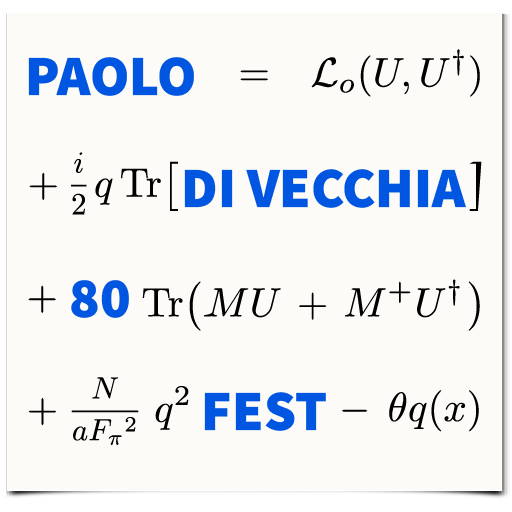In the context of the gauge/gravity correspondence I will present a model where supersymmetry is broken dynamically into stable vacua. This is based on a system of D-branes placed at the tip of the so-called Octagon singularity and represents the first such instance within the correspondence. The model fills a gap in top-down stringy descriptions of the diverse phases and IR dynamics that...
Progress is made towards the evaluation of superstring amplitudes of higher multiplicity at two loops and beyond by reducing the spin structure dependence of worldsheet correlators to that of certain modular tensors. For two loops, a system of trilinear relations obeyed by these modular tensors allows the evaluation of the spin structure sums for arbitrary multiplicity.
We consider a $\mathcal{N}=2$ SCFT in $d=4$ described by a circular quiver with $M$ nodes. The protected chiral single traces can be organized in unwtisted and twisted operators. The structure constants of such operators can be computed at large $N$ using localization and the result can be continued towards strong 't Hooft coupling. In this regime we can check it against the holographic...
I will discuss the role of gauge symmetry for constraining Kerr dynamics. EFTs for both Kerr black holes and the closely related electromagnetic root-Kerr solution are considered using Stückelberg fields. This uniquely predicts the known Kerr three-point amplitudes to all spin using Ward identities that follow from massive gauge symmetry. I will also discuss aspects relevant to the analysis of...
I will discuss different aspects and approaches to the Kerr binary problem using scattering amplitudes techniques. In particular, I will start by showing the construction of a Lagrangian relevant to describe Kerr binaries, deriving expressions for the classical amplitude for the elastic 2—>2 process at 1PM and 2PM. I will then consider radiation reaction effects and their connection to the...
The classical limit of scattering amplitudes provides a convenient strategy to calculate gravitational observables associated to black-hole encounters. Taking this limit requires a resummation in the effective coupling, known as the eikonal exponentiation. In this talk, I will present recent progress on the operator version of this exponentiation, which combines elastic (two-to-two) with...

